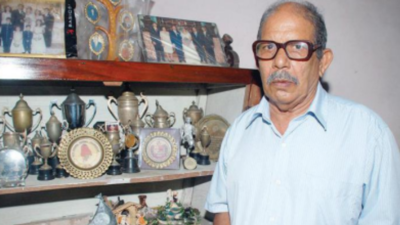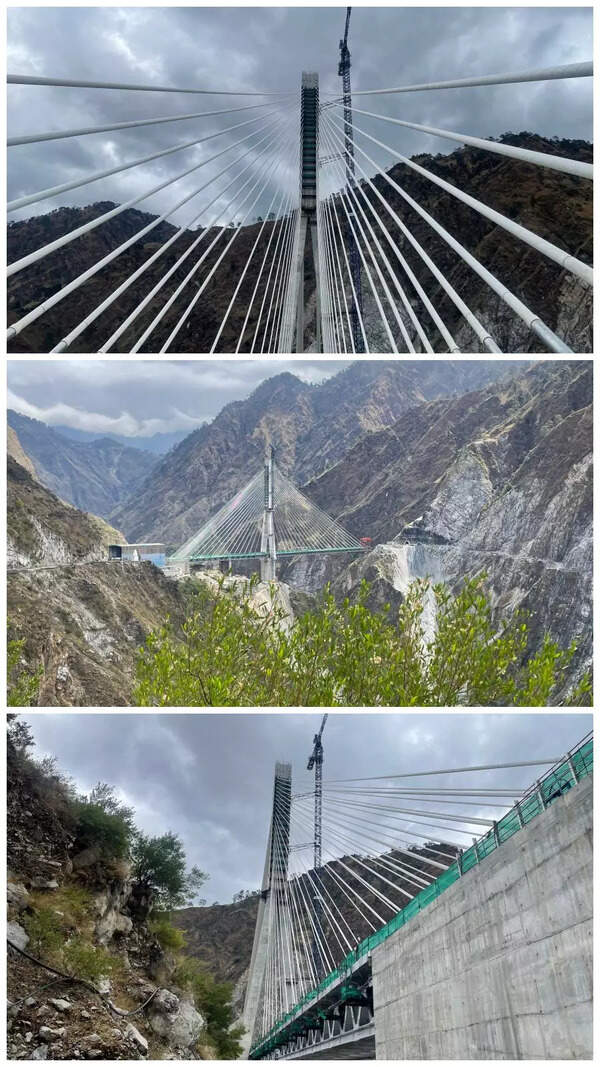Trending Topics
Menino Figueiredo, Goa's first international sportsperson who personified defending, dies at 86

Menino was never booked for a foul in the entirety of his career
PANAJI: Menino Figueiredo, Goa's first international sportsperson, had two group pictures framed in his living room.
The first was dated prior to Goa's Liberation, when he did duty for MCC, the football team associated with the Margao Cricket Club. The other was from 1962, when Jawaharlal Nehru opened the doors of the Prime Minister's official residence to a football team for the first time.
Whenever any official, past or present, visited the former Salgaocar SC defender at his residence in Carmona, Figueiredo would struggle to speak. With growing age, he could barely hear, but, except for the two Portuguese players at MCC, he could identify all his teammates in the photo.
"Football was always dear to him," his son Melvis told TOI on Saturday.
Figueiredo, who breathed his last late on Friday night, remains dearest to Goan football too. He was 86, and is survived by his two sons and daughter.
The towering defender was the first Goa footballer — born and raised in the state — to represent India, when Russia played five official tests and several unofficial games across the country in 1965. Before Figueiredo, there were several other famous ‘Goans’ in Indian football squads.
Neville D’Souza, who scored a hat-trick for India against Australia at the Olympics in 1956, is a Goan, born, raised, and trained in Bombay, now Mumbai. So is his brother Dereyk, Joe D’Sa, and Anthony Braganza. Olympian Fortunato Braganza was born in Goa, but migrated to Bombay when he was six years old. “Figueiredo got selected for the national team based on just two games, both against Andhra Pradesh at the Santosh Trophy in 1964,” said Alberto Colaco, former general secretary of the All India Football Federation (AIFF).
“Those days, it wasn’t easy to get noticed because Goan teams did not play too many outstation tournaments. Figueiredo’s selection to the Indian team was a massive achievement for the state, given that there were already star defenders like Jarnail Singh and Arun Ghosh.” Liberated from Portuguese rule only in December of 1961, no Goan team took part in national championships till the Santosh Trophy in 1964.
It was the 20th edition, and as the Goa Football Association (GFA) selected the team, Figueiredo was the unanimous choice for captain. Goa drew with Andhra Pradesh 1-1 on debut and lost 0-1 in the replay against their opponents, who eventually made it to the final. “Menino was a colossus, such a towering figure on the field. Even against the Portuguese players, he was just as good. He defended fiercely and expected his teammates to show the same level of commitment,” said Colaco, who paid Figueiredo regular visits, the last of which was on his birthday five months ago.
Figueiredo started his football career as a 16-year-old with Carmona Sports Club, and even though only for a year, had impressive spells with MCC, Independente, and Railways. His best, though, was reserved for Salgaocar, who he joined in 1959 and stayed with until the end of his career in 1971.
“I saw him first as a 10-year old, wearing the famous red and black jersey of Salgaocar with No 5 at the back,” said Padma Shri and former India goalkeeper Brahmanand Shankhwalkar. “He was such a commanding figure who rarely allowed anything to cross him.” Figueiredo captained Goa at the first two Santosh Trophy tournaments and led Salgaocar when the team was invited for the DCM Trophy in Delhi.
The defender was the first to shake hands with Nehru when the team was invited to his official residence. He was also the captain of the invincible Salgaocar team of 1963-64, when they won the Senior Division League without losing a match, and with two games to spare. “Menino was designated half-back, but his role was really that of a twin stopper. His build suited the role,” said former GFA secretary Antonio Botelho.
Quite significantly, for a tough-as-nails defender, Figueiredo was never booked for a foul by the referee in his career. “The achievements of Figueiredo will remain etched in history,” said GFA president Caitano Fernandes. “The state government should ensure that his exploits are not forgotten, by naming some football infrastructure after him.”
The first was dated prior to Goa's Liberation, when he did duty for MCC, the football team associated with the Margao Cricket Club. The other was from 1962, when Jawaharlal Nehru opened the doors of the Prime Minister's official residence to a football team for the first time.
Whenever any official, past or present, visited the former Salgaocar SC defender at his residence in Carmona, Figueiredo would struggle to speak. With growing age, he could barely hear, but, except for the two Portuguese players at MCC, he could identify all his teammates in the photo.
"Football was always dear to him," his son Melvis told TOI on Saturday.
Figueiredo, who breathed his last late on Friday night, remains dearest to Goan football too. He was 86, and is survived by his two sons and daughter.
The towering defender was the first Goa footballer — born and raised in the state — to represent India, when Russia played five official tests and several unofficial games across the country in 1965. Before Figueiredo, there were several other famous ‘Goans’ in Indian football squads.
Neville D’Souza, who scored a hat-trick for India against Australia at the Olympics in 1956, is a Goan, born, raised, and trained in Bombay, now Mumbai. So is his brother Dereyk, Joe D’Sa, and Anthony Braganza. Olympian Fortunato Braganza was born in Goa, but migrated to Bombay when he was six years old. “Figueiredo got selected for the national team based on just two games, both against Andhra Pradesh at the Santosh Trophy in 1964,” said Alberto Colaco, former general secretary of the All India Football Federation (AIFF).
“Those days, it wasn’t easy to get noticed because Goan teams did not play too many outstation tournaments. Figueiredo’s selection to the Indian team was a massive achievement for the state, given that there were already star defenders like Jarnail Singh and Arun Ghosh.” Liberated from Portuguese rule only in December of 1961, no Goan team took part in national championships till the Santosh Trophy in 1964.
It was the 20th edition, and as the Goa Football Association (GFA) selected the team, Figueiredo was the unanimous choice for captain. Goa drew with Andhra Pradesh 1-1 on debut and lost 0-1 in the replay against their opponents, who eventually made it to the final. “Menino was a colossus, such a towering figure on the field. Even against the Portuguese players, he was just as good. He defended fiercely and expected his teammates to show the same level of commitment,” said Colaco, who paid Figueiredo regular visits, the last of which was on his birthday five months ago.
Figueiredo started his football career as a 16-year-old with Carmona Sports Club, and even though only for a year, had impressive spells with MCC, Independente, and Railways. His best, though, was reserved for Salgaocar, who he joined in 1959 and stayed with until the end of his career in 1971.
“I saw him first as a 10-year old, wearing the famous red and black jersey of Salgaocar with No 5 at the back,” said Padma Shri and former India goalkeeper Brahmanand Shankhwalkar. “He was such a commanding figure who rarely allowed anything to cross him.” Figueiredo captained Goa at the first two Santosh Trophy tournaments and led Salgaocar when the team was invited for the DCM Trophy in Delhi.
The defender was the first to shake hands with Nehru when the team was invited to his official residence. He was also the captain of the invincible Salgaocar team of 1963-64, when they won the Senior Division League without losing a match, and with two games to spare. “Menino was designated half-back, but his role was really that of a twin stopper. His build suited the role,” said former GFA secretary Antonio Botelho.
Quite significantly, for a tough-as-nails defender, Figueiredo was never booked for a foul by the referee in his career. “The achievements of Figueiredo will remain etched in history,” said GFA president Caitano Fernandes. “The state government should ensure that his exploits are not forgotten, by naming some football infrastructure after him.”
Start a Conversation
FOLLOW US ON SOCIAL MEDIA
FacebookTwitterInstagramKOO APPYOUTUBE










